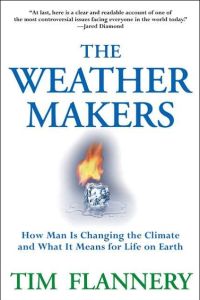Зарегистрируйтесь на getAbstract, чтобы получить доступ к этому краткому изложению.

Зарегистрируйтесь на getAbstract, чтобы получить доступ к этому краткому изложению.
Tim Flannery
The Weather Makers
How Man Is Changing the Climate and What It Means for Life on Earth
Atlantic Monthly Press, 2006
Что внутри?
The dangers of global warming are imminent. How did we get here and what can we do?
Recommendation
Global warming, caused by greenhouse gas emissions, is an incontrovertible, unassailable fact. Yes, a few flat-earth folks remain who argue that more proof is still needed. Thousands of objective technical reports, published in refereed scientific journals, clearly show the case is already made. In the scientific community, there is no debate: Climate change, caused by humans, is here. And, unless we quickly do something about it, the end results could be cataclysmic. getAbstract recommends Tim Flannery’s impassioned book about climate change. This book will thoroughly educate you regarding the dangers of global warming and will tell you what you can do to address this shared problem. It is hard to imagine a more vital topic.
Summary
About the Author
Tim Flannery is a scientist, explorer, conservationist and author. He has published more than 100 peer-reviewed papers and speaks often on ABC Radio, NPR and the BBC.

















Comment on this summary